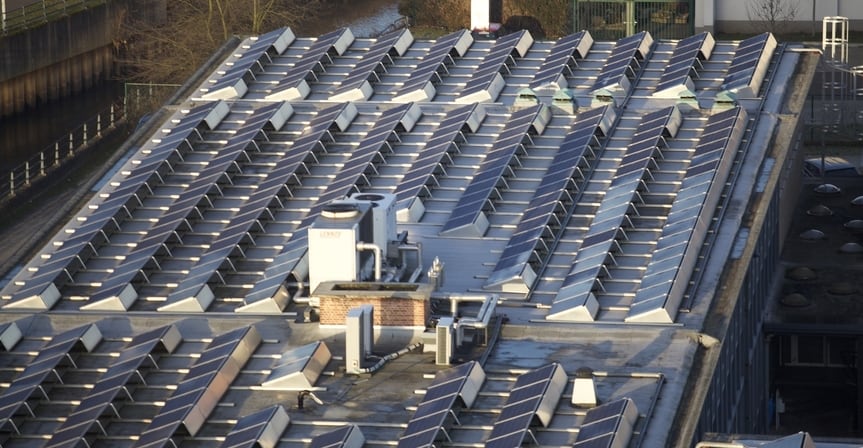3 Jul 2020
NEWS & INFORMATION
Why Energy Efficiency Matters
Energy efficiency is heralded as the solution to meeting increasing global energy demand and resource scarcity.
However on a global scale, energy efficiency has been met with a number of challenges.
The global energy community is now well positioned, with the lessons of over two decades of energy efficiency programs all over the world, to deliver new and successful programs in order to harness the possibilities of energy efficiency.
Here at Cherry, we proud to be part of the clean energy revolution in Australia and are a market leader in providing energy efficiency solutions.

What problems are we facing?
Global energy demand continues to rise at an increasing pace. Investments in energy must similarly increase in order to meet the demand. This inevitably creates a plea for new, renewable technologies and solutions – and this is nothing new.
As demand grows, the burden on governments to support and incentivise energy efficient technologies and programs has become immense. Traditional solutions such as increasing taxes or implementing trading schemes serve only to exclude the poor and most vulnerable from the energy efficient space. Successful policies in developed countries must therefore be tailored and adapted to meet the distinct challenges faced by developing nations.
In Australia, we are fortunately positioned to be able to offer flagship examples of how to use energy efficiency most effectively.
How can energy efficiency help to meet the challenges?
Reducing waste and using energy as efficiently as possible facilitates a more effective allocation of resources, with the potential to boost economic output by US$18 trillion by 2035.
Improvements in energy efficiency are the most cost effective way to help increase competitiveness, generate employment, secure energy, reduce poverty and benefit development. By using otherwise wasted, inefficient resources more efficiently, we are able to pay for new developments while remaining cash flow positive.
McKinsey Global Institute ranked energy efficiency as the top priority among measures to mitigate climate change back in 2008, and it has only grown in influence and importance in the last 8 years.

EXAMPLES
- Russia is the 3rd largest energy-consuming country, but is more energy-intensive than any of the top 10 energy-consuming countries. Through energy efficiency, it could eliminate almost 800 million tons of CO2 per annum – equal to the total energy consumption of France.
- China’s efforts to increase energy efficiency between 1980 and 2010 have resulted in a decline in energy intensity by 70%, equivalent to a reduction of 24.4 billion tons of CO2 emissions.
Why has the road to energy efficiency been so difficult?
With few negative externalities, generally high profits and cash flow positive solutions, it would seem that achieving energy efficiency would be straight forward. However, market failures and systemic barriers are preventing the realisation of energy efficiency’s potential.
- Poor market incentives and take up from governments to encourage investments in energy efficiency
- Low capacity of governments and agencies to influence changes in policies and deliver effective programs.
- Lack of convincing data and systemic evaluations of programs, costs and impacts.
- Absence of international consensus on the most effective policies and approaches for scaling up energy efficiency, the appropriate role of governments and how to change cultures and behaviours.
What we have learned
- Local, national and global policies must be accompanied by enforcement and implementation eg. China’s ‘acceptance codes’ at a building’s commissioning phase and clear rules and responsibilities for noncompliance
- National targets and reporting improve accountability
- Programs should be designed for implementation at scale
- More simple programs and business models are needed
- Incentives must drive markets
Incentives, incentives, incentives!
Incentive gaps related to energy efficiency are numerous. Victoria and New South Wales are great examples of using national schemes (EUAs, ESC and VEEC) to incentivise all players in the energy efficiency markets.
There needs to be a careful resolution of misaligned incentives. Utility companies fear decreases in sales due to increases in efficiency, landlords own buildings but tenants pay energy bills so neither party has a sufficient incentives to invest in energy efficiency. Australia is leading the way with their Environmental Upgrade Agreement (EUA) financing options in an attempt to incentivise all involved parties.
Markets respond most positively to the alignment of incentives.
moving forward
The resounding messages from the past two decades are of the importance to deliver energy efficiency initiatives at scale, to engage the private sector as early as possible and then follow with the public sector, and to plan ahead with the support of expansive research and monitoring of receptivity.
At Cherry, we will continue to make our products and services as accessible as possible to all Australians to facilitate our local and national government programs in order educate the local community on the benefits of energy efficiency.
